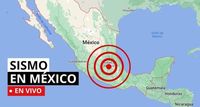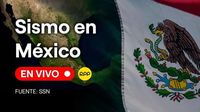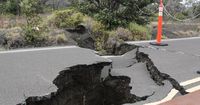Mexico is no stranger to seismic activity, as it sits squarely within the Pacific Ring of Fire, a region known for its frequent earthquakes. According to the National Seismological Service (SSN), the country experiences over 90 earthquakes each year with a magnitude greater than 4.0 on the Richter scale, accounting for about 60% of the world's seismic events. This makes Mexico one of the most seismically active countries globally.
The SSN diligently monitors seismic activity across the nation, providing timely reports and alerts to ensure public safety. For instance, on March 30, 2025, the SSN reported several earthquakes, including a magnitude 3.8 quake that struck 112 kilometers southeast of Salina Cruz, Oaxaca, at 4:39 AM local time. This earthquake had a depth of 28.4 kilometers and was one of several tremors recorded on that day.
Among the notable seismic events was a 3.9 magnitude earthquake occurring just 25 kilometers northeast of Zihuatanejo at 4:09 AM, with a depth of 60.8 kilometers. Earlier, at 2:02 AM, a magnitude 3.7 earthquake was detected 123 kilometers southeast of Salina Cruz, with a depth of 10.2 kilometers. Such frequent seismic activity raises concerns about preparedness and response strategies among the local population.
In light of the ongoing seismic risks, the SSN emphasizes the importance of having an emergency backpack ready. Essential items to include are hygiene products, a first aid kit, non-perishable food, water, and communication devices. Specific items for infants, the elderly, and women should also be considered. The SSN advises that being prepared can significantly mitigate the impact of a quake.
In the context of seismic events, it is essential to understand the difference between a "temblor" (tremor) and a "terremoto" (earthquake). Generally, a tremor refers to smaller, less impactful seismic movements, whereas an earthquake typically denotes a more significant event that can cause considerable damage and loss of life.
Historically, Mexico has faced devastating earthquakes, with one of the most catastrophic occurring on September 19, 1985, when an 8.1 magnitude quake struck Mexico City. This disaster resulted in an estimated 10,000 fatalities and extensive destruction of infrastructure.
As part of its commitment to public safety, the SSN issues daily reports detailing seismic activity. The morning report on March 30, 2025, included all earthquakes recorded with a magnitude less than 4.0, ensuring that citizens stay informed about seismic risks in their areas.
In addition to monitoring and reporting, the SSN has developed the Mexican Seismic Alert System (SASMEX), which provides early warnings to cities at risk. This system can give citizens between 20 to 120 seconds of advance notice before an earthquake strikes, depending on the distance to the epicenter. Cities such as Mexico City, Puebla, and Acapulco benefit from this alert system, which serves over 25 million people.
Earthquakes occur due to the sudden release of energy in the Earth’s crust, often resulting from the movement of tectonic plates. Mexico's location at the intersection of multiple tectonic plates—including the North American, Cocos, and Pacific plates—makes it particularly susceptible to these geological phenomena.
On March 29, 2025, the SSN reported several other earthquakes, including a 4.0 magnitude quake 65 kilometers southeast of San Marcos, Guerrero, and another 4.0 magnitude quake 18 kilometers southeast of Suchiapa, Chiapas. These events illustrate the ongoing seismic activity in the region.
In case of an earthquake, the SSN recommends that individuals remain calm and follow specific safety protocols. If indoors, find shelter under sturdy furniture. If outside, move to an open area away from buildings, trees, and utility lines. Those in vehicles should stop safely and remain inside until the shaking stops.
Despite the unpredictability of earthquakes, the SSN continues to enhance its monitoring capabilities and public awareness efforts. The organization encourages citizens to stay informed about seismic risks and to be prepared for potential emergencies.
As the population grows and urban areas expand, the need for effective earthquake preparedness becomes even more crucial. The SSN plays a vital role in educating the public about seismic risks and ensuring that individuals have the necessary tools to respond effectively during an earthquake.
In summary, Mexico's location within the Pacific Ring of Fire makes it a hotspot for seismic activity, with the SSN working tirelessly to monitor and report on earthquakes. The public's preparedness is key to minimizing the impact of these natural events, and the SSN's ongoing efforts to provide timely information and alerts are essential for safeguarding lives and property.






